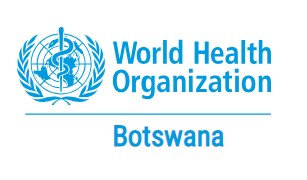Botswana has made remarkable strides in leprosy elimination, with zero new autochthonous cases reported for consecutive years. However, continued efforts are essential to maintain this success and address sporadic cases. The World Health Organization (WHO), in collaboration with the Ministry of Health (MOH), recently intensified post-elimination efforts in Ngami and Okavango districts. The initiative focused on updating national leprosy guidelines, training healthcare workers, conducting contact tracing, and analyzing epidemiological data to strengthen surveillance and management.
A team comprising experts from Botswana’s National TB and Neglected Tropical Diseases (NTD) Programmes, WHO country and regional offices, and consultants revised the 2012 leprosy guidelines. The updated guidelines incorporate new epidemiological data, refined elimination criteria, revised treatment regimens, and expanded coverage of other skin diseases like scabies and mycetoma. The shift to universal treatment using multibacillary (MB) blister packs ensures standardized care for both adults and children, with durations of six months for paucibacillary (PB) and twelve months for MB cases. Emphasis was also placed on community engagement and improved referral systems to enhance case identification.
Recognizing the need for robust surveillance, WHO conducted a training workshop in Ngami District for health professionals, including dermatologists, disease surveillance officers, and health promotion officers. The training, facilitated by Dr. Alexandre Tiendrebeogo, covered leprosy case management, elimination monitoring, and diagnostic skills. Participants engaged in practical exercises and discussions, with pre- and post-tests revealing a significant improvement in their knowledge of leprosy diagnosis and treatment. This initiative aims to equip frontline healthcare workers with the skills necessary for early detection and effective management.
As part of the mission, field visits were conducted in Okavango and Ngami districts to trace contacts of previously diagnosed leprosy patients. The team visited remote areas such as Gudigwa, Seronga, and Beetsha, assessing five individuals, four of whom had previously undergone treatment. A significant finding was a case dating back to 2002 that had remained undiagnosed due to the absence of visible skin patches. Additionally, a patient experiencing a leprosy reaction received guidance on anti-inflammatory treatment. These findings underscore the importance of sustained surveillance and follow-up care.
Botswana’s leprosy elimination efforts have yielded positive results, with annual reports showing a consistently low number of cases since 2000. While sporadic detections continue, particularly in adults, no child cases were reported until 2023. The latest epidemiological review highlighted the need for continued vigilance in case detection, management of complications, and support for individuals with leprosy-related disabilities. Strengthening social protection measures and linking affected persons to rehabilitation services remain key priorities.
To sustain progress in leprosy elimination, the mission proposed several key recommendations. These include developing a Leprosy Elimination Dossier for submission to WHO Africa and headquarters, finalizing the National NTD Master Plan to guide long-term disease control strategies, enhancing case detection and management to address sporadic cases effectively, and strengthening rehabilitation and social protection services for individuals with leprosy-related disabilities. With these initiatives, Botswana reaffirms its commitment to eliminating leprosy as a public health threat while ensuring that no case goes undiagnosed or untreated. The continued collaboration between WHO, MOH, and local health workers remains crucial in achieving this goal.
Distributed by APO Group on behalf of World Health Organization (WHO), Botswana.


